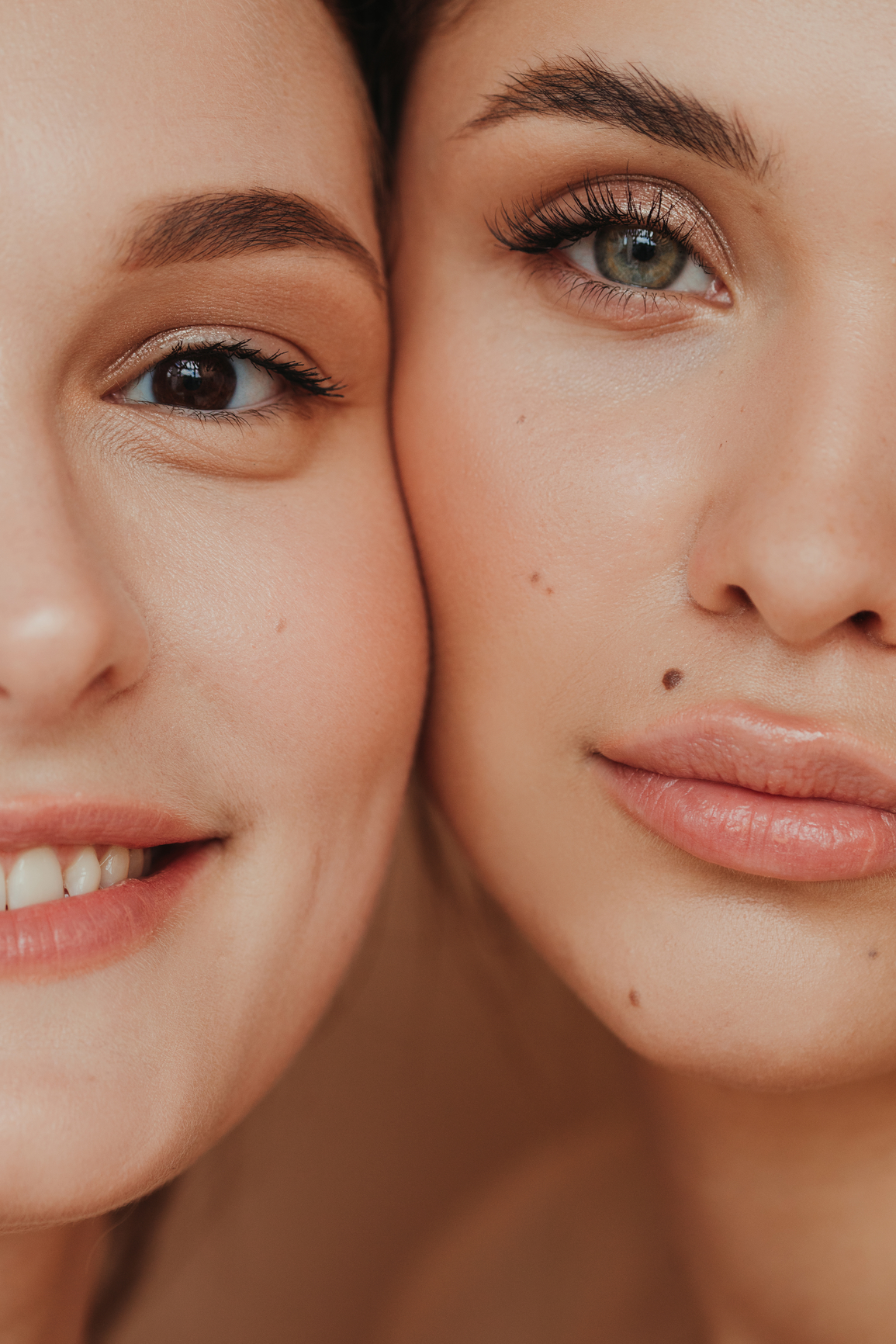Article by: The Good Face Project
What is Clean Beauty?
The definition of clean beauty may change depending on who you ask. It is also often confused with other terms like natural beauty, green beauty, and so on.
To us, clean beauty means having ingredients that are scientifically safe and sound. The risk that using a clean beauty product is minimal based on scientific research papers. Our strict standards for safety have been carefully crafted by analyzing more than 100,000 ingredients and 21,000 scientific research sources. When we label a beauty product as clean, we don’t do so lightly. Before a product gets our seal of approval, it must be vetted.

Why Do We Need Clean Standards in Beauty?
The responsibility to make sure cosmetics are safe falls largely on the consumer since beauty products do not require FDA approval to come to market. When they do pass through the FDA, only 11 toxic ingredients are banned, leaving thousands of potentially harmful ingredients available for brands to use.
Some of those ingredients are known carcinogens, hormone disruptors, irritants, and allergens, which means using such products poses serious side effects to unknowing consumers.
The solution? Become an expert in cosmetic ingredients in order to understand complex and confusing ingredients lists. Or use free resources like the Good Face Index to do that for you.
2021 Clean Beauty Trends
With the New Year comes new trends. Here is what we foresee in the clean beauty market.
1. Conventional brands to introduce clean product lines
When one industry starts picking up traction, suddenly many people from competing industries jump on the bandwagon. Take plant-based food products for example. With the rise of non-dairy milk alternatives like almond milk and oat milk, dairy manufacturers started to introduce non-dairy products to their line of products to appeal to alternative milk consumers. Had milk alternatives like oat milk never taken the world by storm, the non-dairy section of the grocery store wouldn’t be as extensive as it is today. If you can’t beat them, join them, right?
This applies to beauty as well. The beauty industry is vast, so when clean beauty started making noise, big beauty brands and retailers took notice. Specifically, they noticed the group of consumers whose mindset shifted towards using only clean products. This is why we’ve seen retailers like Target and Sephora launch dedicated seals to highlight clean products as well as brands like COVERGIRL launch a clean range.
2. Cruelty-free is the standard
Norms change all the time. Animal testing used to be the norm, but we are seeing a shift towards cruelty-free becoming the baseline.
Passionate activities have vilified cosmetic testing on animals for years, but we are finally seeing the average consumer do their research on a brand’s stance on animal testing before making a purchase. This is why cruelty-free brands emphasize their position against animal testing on their packaging and marketing materials.
Legislature is also changing in favor of cruelty-free cosmetics. The California Cruelty-Free Cosmetics Act prohibits the sale of cosmetics and personal hygiene products that are tested on animals. We anticipate more legislation like this to follow.
California is not only paving the way for cruelty-free cosmetics, but also for clean beauty products. In September 2020, California Governor Gavin Newsom signed AB 2762 and SB 312 into legislation. These pieces of legislation prohibit 24 toxic chemicals in cosmetics sold in California starting in 2025 and require companies to report the presence of hazardous ingredients like fragrance, respectively.
3. Vegan formulas
While “cruelty-free” refers to the rejection of animal testing, “vegan” means that a product is free of animal testing AND animal-derived ingredients. Though “vegan” is a buzzword, its meaning leaves very little room for interpretation. Like other values — eco-friendly, sustainable, zero waste, etc. — consumers appreciate products that put their conscience at ease.
Some of our Good Face Index brands, such as KitavaMD, proudly label all of their products vegan. Knowing that this is important to many consumers, we expect to see more vegan-friendly products on the market. This is why we filter for “Vegan” products on our Good Face Index.
5. More accessible clean beauty
When products are available in small quantities and the demand is low, they tend to be hard to find or only available at select stores. With the increasing demand for clean beauty products, we project an increase in accessibility to clean cosmetics.
Currently, we vet clean beauty products available at accessible retailers like Amazon, Ulta, and Sephora. Other accessible online stores to find clean products include Follain, Credo Beauty, and The Detox Market.
With the growth of the clean beauty industry and the increasing interest of consumers, the availability of clean cosmetics too will grow.
6. Personalized and custom beauty
It was only a matter of time before beauty and tech collided. At CES 2020, one of the biggest tech events in the world, the number of beauty exhibitors increased by more than 10 percent.
You may have heard of artificial intelligence (AI), but have you wondered how AI could improve your beauty routine? Enter augmented and virtual reality (AR/VR), the technology that allows you to virtually try beauty products before purchasing them.
One breakthrough piece of technology unveiled at CES 2020 was a skincare device that uses AI to scan and address skin issues like hyperpigmentation. Other devices can even scan for skin cancer, monitor skin’s exposure to UV rays, and so on.
If you can’t get your hands on such devices yet, there is beauty tech you can access today. The Good Face App uses an advanced algorithm that analyzes your skin needs and matches users to clean skincare products. The app is free to download, so any clean beauty enthusiast can take the skin quiz and receive a free personalized skincare routine.
7. At-home self-care for skin and body
If there’s one thing we’ve done more of in 2020 than probably ever before, it’s stay home. With the need for social distancing and at-home activities, treatments for hair, skin, and nails can be done at home instead of at the spa.
Having a self-guided at-home spa day is possible with the help of clean products for the whole body. We have especially seen an uptick in the demand for body care products like body scrubs, oils, lotions, and bath salts.
Not only is this a great way to care for the body, it’s also a stress reliever. This is a trend that’s long overdue, but one we’re grateful to see since body care is often overlooked.
8. Eco-friendly packaging
According to The Benchmarking Company, a consumer research company that uncovers consumer buying behavior, female customers are making their beauty purchases online more than ever. Not only are they spending more time researching beauty brands and ingredients, but approximately 47 percent are also buying more beauty and personal care products online. Specifically, Amazon has seen a 70 percent increase in online beauty-related purchases.
The increase in online shopping has led to an increase in the use of shipping materials. If you’ve ever ordered from Amazon before, you may be familiar with the recognizable Amazon shipping boxes. Suddenly, Amazon shipping trucks and boxes are everywhere.
To cut back on the environmental costs of online shopping, Amazon introduced its new program, The Climate Pledge, a commitment to be net-zero carbon by 2040. One aspect of this pledge is to design more compact packaging, which saves space during transit. Since Amazon recognizes brands whose packaging meets its climate-friendly qualifications, we expect to see even more eco-friendly and sustainable packaging.
